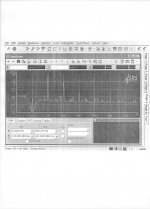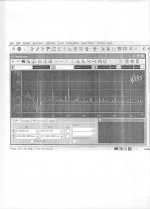Can You post simple schematic how did You measured this?I just measured one today that measured higher than -100dB
34k In Cambridge Mass ? What you buying an Outhouse ...
I heard Classe is now manufactured in China and yet still commanding big $$. Big difference between your DH220 and a vitus, really big ..

Already have one.
Sorry to disappoint, but in situ the only swap I doubt the difference would excite me and I would NOT bet I could tell the difference. hint: I don't listen to Creedence Clearwater Revival at 11 (or even at 0).
Last edited:
I don't listen to Creedence Clearwater Revival at 11 (or even at 0).
Zep "two" at 11.
CCR at 6.
Just got back from Illinois, lock the front door oh boy.
Got to set down, take a rest on the porch..
jn
I will give a written description and the results:
5uf Tant cap, 1V AC rms, 1000ohm load, 100Hz frequency.
natural rolloff is 32Hz. If one scales this result, it is obvious that even with a 50uf Tant cap (typical for this situation) would have a similar result with a 10Hz frequency.
5uf Tant cap, 1V AC rms, 1000ohm load, 100Hz frequency.
natural rolloff is 32Hz. If one scales this result, it is obvious that even with a 50uf Tant cap (typical for this situation) would have a similar result with a 10Hz frequency.
I will give a written description and the results:
5uf Tant cap, 1V AC rms, 1000ohm load, 100Hz frequency.
natural rolloff is 32Hz. If one scales this result, it is obvious that even with a 50uf Tant cap (typical for this situation) would have a similar result with a 10Hz frequency.
A non polarized tantalum?
jn
I will give a written description and the results:
5uf Tant cap, 1V AC rms, 1000ohm load, 100Hz frequency.
natural rolloff is 32Hz. If one scales this result, it is obvious that even with a 50uf Tant cap (typical for this situation) would have a similar result with a 10Hz frequency.
Tantalum? Who's using tantalum for coupling caps? Thought the discussion was about film caps. Did you have any DC bias on the tantalum?
se
Try to use ordinary elyt, not tantalum cap (worst possible selection) . Use "big enough" value (fc bellow 3Hz), distortion in audio band will be -130dB and lower..
It is the same debate as 2 years ago..
And http://sound.westhost.com/articles/capacitors.htm , bold Note.
It is the same debate as 2 years ago..
And http://sound.westhost.com/articles/capacitors.htm , bold Note.
Last edited:
Did you know that I discovered that Tantalums are pretty bad, and that I discovered this 40 years ago? I even wrote an IEEE paper mentioning Tantalum caps. Did anybody listen to me then? VERY FEW! But I had measurements much like the one I put up. That makes you guys up to 40 years behind in cap quality. So what to do? MYLAR was tried, even by me, and found to be audible in listening tests. Then what? NOW we use polypropylene, polystyrene, or Teflon in our highest level designs. I do have perhaps 1000 Tantalum caps, what should I do with them? Haven't used them for anything important for the last 30 years.
Of course, there is Dielectric Absorption or DA, originally put forth by Richard Marsh, back in the late 70's. Mylar is kind of lousy that way, and probably what is audible.
Then, what else? How about capacitor construction? Is it damped or does it sing with certain signals? Magnetic leads? Decent attachments of the leads to the foil? ETC.
That is why we work so hard to find the best caps for audio. One oversight, and compromise prevails.
Of course, there is Dielectric Absorption or DA, originally put forth by Richard Marsh, back in the late 70's. Mylar is kind of lousy that way, and probably what is audible.
Then, what else? How about capacitor construction? Is it damped or does it sing with certain signals? Magnetic leads? Decent attachments of the leads to the foil? ETC.
That is why we work so hard to find the best caps for audio. One oversight, and compromise prevails.
Funny how with many capacitors we use the proper nomenclature but with something else we use a trade name. Mylar: Polyethylene terephthalate, commonly abbreviated PET, is a thermoplastic polymer resin of the polyester family. So why not just call Mylar capacitors polyester caps? We use polypropylene all the time and polystyrene so why not polyester for Mylar?
Tantalums are pretty bad, everybody should know that.
Yeah, I think it was a bit duplicitous of John to respond to the -160dB figure Scott put out with a -100dB figure, only to find that John was talking about a tantalum cap, apparently without a bias voltage on it.
se
John,
I would think you would have to qualify that Mylar sucks comment. I an active circuit I assume you are correct that they are not the most linear type of cap, but what of a simple passive crossover, I would think that a Mylar cap would be preferable over an electrolytic cap in this instance even if it could be improved by a polystyrene or polypropylene cap.
I would think you would have to qualify that Mylar sucks comment. I an active circuit I assume you are correct that they are not the most linear type of cap, but what of a simple passive crossover, I would think that a Mylar cap would be preferable over an electrolytic cap in this instance even if it could be improved by a polystyrene or polypropylene cap.
Low Distortion is only the FIRST hurdle that we have to pass. I passed that hurdle 40 years ago.
Then what? Well we tried something somewhat better, like polycarbonate, or Mylar. Mark Levinson used polycarbonate and I tried Mylar. Why not? It measured pretty well. Then listening tests by others found that MY DESIGN sound better with the Mylar caps removed. What then? I tried all kinds of military surplus caps, and some were pretty good, others marginal.
It was hit and miss, but I designed lots of things then, and used my Tantalum caps for power supply bypass, only. No more static harmonic or IM distortion from the caps, but what about DA? In 1980, the seminal article on caps by Walt Jung and Richard Marsh showed me the way.
First, it looked like polystyrene, polypropylene or Teflon would work, but are they all the same? NO! Many military grade caps have MAGNETIC LEADS, and our listening tests showed it to be important. That is why I test all my caps, resistors and connectors with a magnet, and if I can, not use any magnetic leaded ones.
It just so happened that Peter Moncrieff of the audio publication IAR found this company near LA, that made some caps that he liked. He had the cap manufacturer change the leads to copper, and he bought a bunch, calling them Wondercaps. Well, I bought a few, and liked them. They were larger than usual, but they were very dense and damped due to their construction, and they were fairly expensive, but for EQ, why not?
Later, other listening tests were done with power supply bypass, and forevermore I stopped using Tantalum caps and used Rel polystyrene if I could, or Polypropylene for bigger values, and premium Japanese aluminum electrolytic caps for the even larger values. This was about 1984, or 30 years ago. Keeping up with me?
Now, what other differences could there be? Mechanical vibration, for one. Perhaps there are others, but I stick to Rel Polystyrene, polypropylene, or Teflon for the most part, with my best designs. You can use what you want.
Then what? Well we tried something somewhat better, like polycarbonate, or Mylar. Mark Levinson used polycarbonate and I tried Mylar. Why not? It measured pretty well. Then listening tests by others found that MY DESIGN sound better with the Mylar caps removed. What then? I tried all kinds of military surplus caps, and some were pretty good, others marginal.
It was hit and miss, but I designed lots of things then, and used my Tantalum caps for power supply bypass, only. No more static harmonic or IM distortion from the caps, but what about DA? In 1980, the seminal article on caps by Walt Jung and Richard Marsh showed me the way.
First, it looked like polystyrene, polypropylene or Teflon would work, but are they all the same? NO! Many military grade caps have MAGNETIC LEADS, and our listening tests showed it to be important. That is why I test all my caps, resistors and connectors with a magnet, and if I can, not use any magnetic leaded ones.
It just so happened that Peter Moncrieff of the audio publication IAR found this company near LA, that made some caps that he liked. He had the cap manufacturer change the leads to copper, and he bought a bunch, calling them Wondercaps. Well, I bought a few, and liked them. They were larger than usual, but they were very dense and damped due to their construction, and they were fairly expensive, but for EQ, why not?
Later, other listening tests were done with power supply bypass, and forevermore I stopped using Tantalum caps and used Rel polystyrene if I could, or Polypropylene for bigger values, and premium Japanese aluminum electrolytic caps for the even larger values. This was about 1984, or 30 years ago. Keeping up with me?
Now, what other differences could there be? Mechanical vibration, for one. Perhaps there are others, but I stick to Rel Polystyrene, polypropylene, or Teflon for the most part, with my best designs. You can use what you want.
- Status
- Not open for further replies.
- Home
- Member Areas
- The Lounge
- John Curl's Blowtorch preamplifier part II




